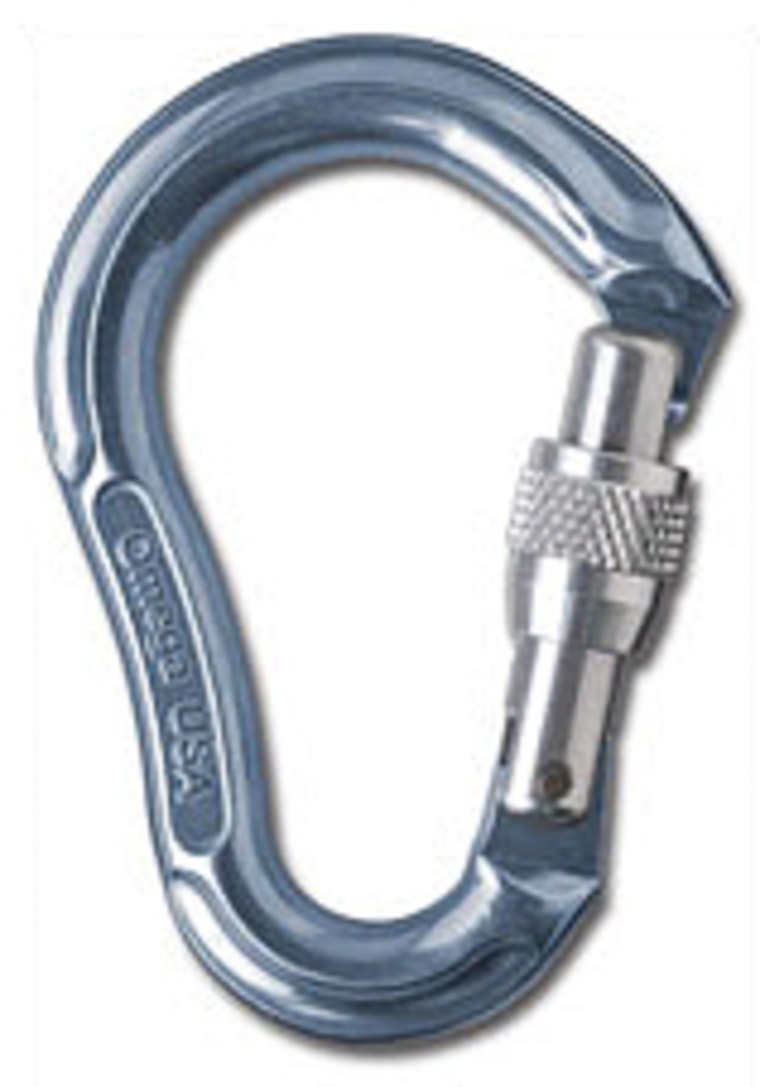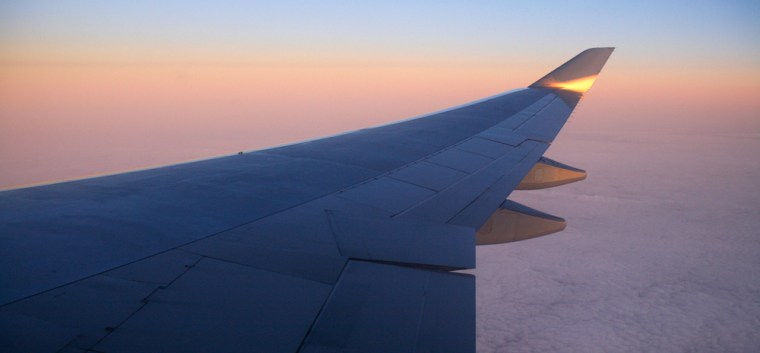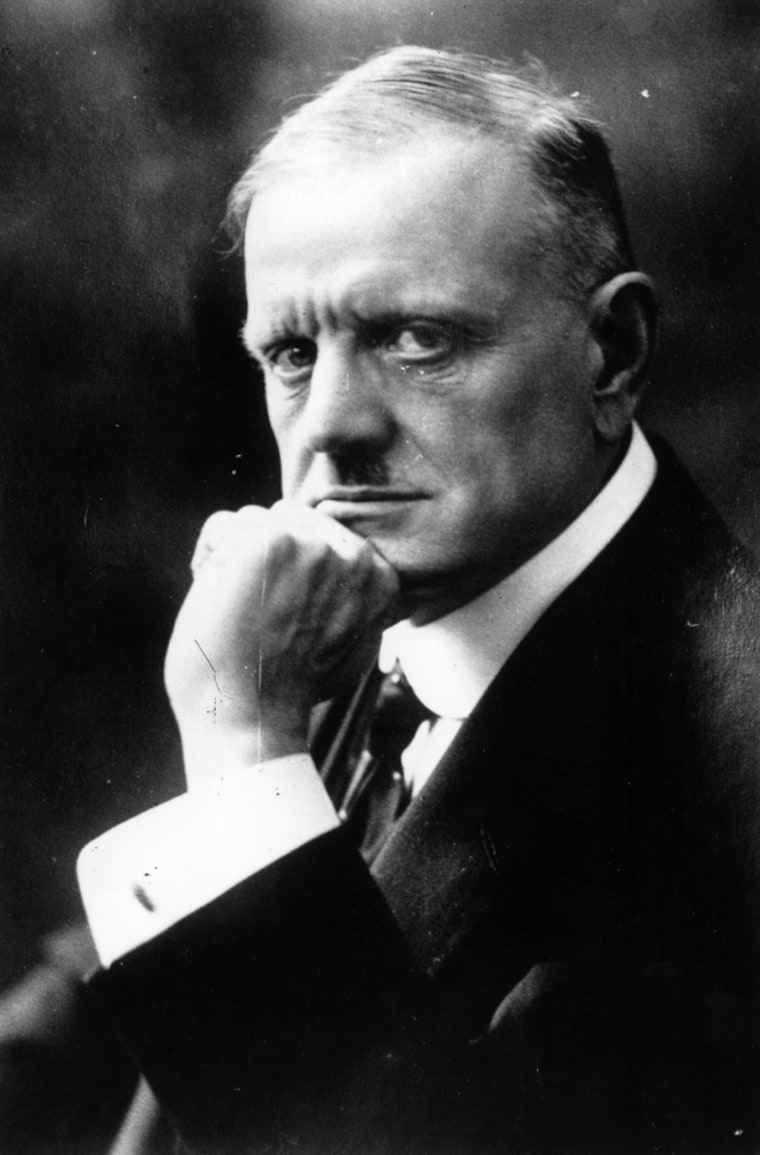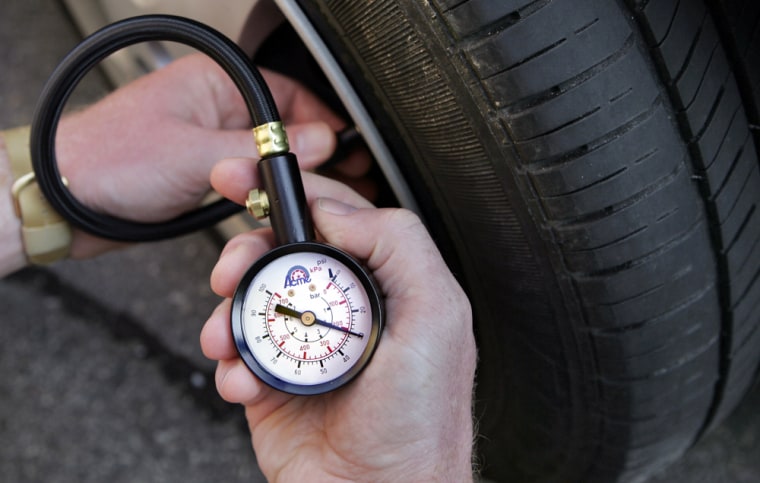The newest marketing scheme to separate car travelers from their money: facilities that, usually for a fee, will fill your tires with not just plain old compressed air but nitrogen gas. Some charge $5 per tire, some as much as $25. Some do it for free if you buy the tires from them, but the expense is doubtless factored into the cost of the tires.
Why would you want to fill your tires with nitrogen? Well, that's what airline, military, and corporate jets use. And race cars. Must be a reason, right?
Right. But it has nothing to do with the way an ordinary passenger vehicle is operated.
The
claim that nitrogen molecules are bigger than atmospheric-air molecules, so they won't worm their way through the slightly porous rubber, and your tire pressure won't slowly drop. But the air with which we conventionally fill our tires is 78 percent nitrogen anyway, so how much difference can it make? Not much.
Besides, some of the inevitable air leakage occurs where the tire and rim meet, and the leaks there are more than molecular.
They also say the nitrogen prevents oxidation of the tire rubber from the inside. Nonsense. The safe life of a tire, even if you never drive on it, is about six to nine years simply from exposure to ozone and sunlight. When your thumbnail can no longer dent the tread, the tires are junk, and that will happen years before the innards oxidize.
Go here to read an interesting discussion of the pros and cons of nitrogen use among a knowledgeable bunch of automotive enthusiasts.
So what about those jets and racers?
Airplane tires are filled with nitrogen because they're made of quite different materials than car tires, because they pass through vast temperature extremes within a matter of hours, and because they are enormously more stressed in terms of speeds and weights than are car tires.
Race-car tires are filled with nitrogen because it is virtually unaffected by temperature. Travel at 150 or 175 mph on a tire filled with compressed air and the heat that speed generates will soon raise the tire pressure by as much as 15 or 20 psi, and in a serious race car (a Formula One car, a car) just a one-psi tire-pressure difference can affect handling substantially. In anything from a Toyota Corolla to a Ferrari 599 traveling at Interstate speeds, even Michael Schumacher
wouldn't notice the difference.
The best thing you can do for your tires is to check the inflation pressure once a month, or certainly before any road trip. And the worst thing you can do is fill them with a gas that might persuade you to ignore them.
But boy, do I have a deal for you! For only $50 a tire, I'll inflate yours with helium. It'll make your car lighter, reduce unsprung weight, and give you better gas mileage. Works for the Goodyear blimp, what's not to like?
for more Perrin Post entries.
One man's D-ring is another man's bludgeon
By Guy Martin
Note from Wendy: Please join me in welcoming Guy Martin to the blog. Guy is a senior correspondent here at Conde Nast Traveler, juggling his investigative work into airport security and anti-terror technology with the occasional ode to various Central European cities. Guy, take it away ...
In one sense, travel is about preventing stuff from coming undone. I travel with ten feet of light-gauge (7.5 mm) rope in, and a carabiner on, my rucksack, and have done since I took off for college in Europe about a billion years ago.
The system is useful for getting your kit off the ground, or lashing it to the top of a truck, or just plain old making it difficult to steal on a night train to nowhere. Right now I'm rocking a bigass Omega CE 0082 Screwgate "locking" carabiner — so named for its serrated locking nut that screws down over the spring-loaded gate. It costs about $13. It's a replacement.
It's a replacement because I was sporting its predecessor through a routine plane change in Charles de Gaulle when a rock-jawed security dick unclicked it from the top of my rucksack and tossed it into the bin with all the confiscated nail scissors and Swiss Army knives.
"What!" I said. "That has no blade! I just came through Berlin security with it." In fact, I had come through Istanbul, Kuala Lumpur, London, Manila, New York and Madrid security with it, to name just a few towns that suffered Islamist terror in the last few years.

"Monsieur," he condescended. It was the only word he uttered. Carabiners are, of course, more or less D-shaped trapezoids. With epic nonchalance, he grabbed one of the long sides, balling his fist around it. The other long side made a killer set of non-brass brass knuckles across the top of his hand.
Then he slammed his metal-draped fist into his opposite palm. A martial arts demonstration on an airport security line! Crazy town! And, I might add, a personal, post-9/11 first for me. After his little ninja episode, he shrugged, stared balefully at me and tossed my carabiner back in the confiscated-weapons bin.
Technically, he had a point. A paranoid one, but still: It's possible that a cell of insane carabiner-bearing Wahabists could take over a jumbo. They would have to be damn fit — think: The Terminator, minus the social skills — and they'd have to be damn lucky, to encounter no resistance from passengers or deadly force from air marshals, for instance. Like military strategy, however, the architecture of counterterror hews closely to the last war fought. Seeing a weapon in a quotidian bit of sports equipment is extremely last-war-fought. The long and short of it is that, regarded with enough malevolence, everything's a weapon. What about my belt? I've got a bitchin' silver buckle that'll take your eyes out, dude, and you just handed that back to me.
I replaced the beloved clip the next day and now generally seek to avoid Charles de Gaulle. When it's unavoidable, I check my carabiner.
Ohmygod, our wing is brokenBy Stephan Wilkinson
Don't be fooled by the media hysteria following the flight of a SriLankan Airlines Airbus A340 from London Heathrow to Colombo, Sri Lanka without its left winglet (a small, sweptback vertical fin at the very end of each wing). The airplane made the trip two weeks ago, with passengers aboard, following a minor incident in which it clipped the wingtip of a British Airways 747 while taxiing for takeoff at Heathrow.

Damage to the BA 747 was a bit worse than what happened to the Sri Lankan airplane, but a maintenance crew cleanly removed the A340's winglet, which is a pretty easy job: A winglet has no structural function, adds no strength to the wing or anything else, and is basically a hollow carbon-fiber fin the only function of which is to keep air from spilling uselessly sideways off the wingtips, rather than flowing straight back and thus creating lift.
But might the impact have damaged the Airbus's wing, as some feared? (Several passengers refused to reboard the flight when it left Heathrow, winglet-less, the next morning.)
Consider this:
Navy carrier aircraft typically have entire wingtips that are designed to be knocked off and replaced, since they occasionally run into each other in the extremely close confines of a carrier's flight or hangar decks, and nobody worries that the impact has hurt anything else.
Unlike an airplane's vertical fin and rudder (the big sail on the tail of an airliner), a winglet has no control or stability function: It doesn't keep the airplane flying straight or help it to turn. In fact, I'm sure the A340 was flight-tested with one or the other winglet removed before it was certified, since these are parts that could easily be blown off during a lightning strike. (The electricity instantly superheats the air inside a hollow winglet, and the sudden pressure pops it loose.) And unlike a rudder, it doesn't move.
Nor is it an integral part of the wing, any more than your car's outside rear-view mirrors are part of the doors. It's typically held in place by strong but simple fasteners called machine screws: unscrew them and you can pull the winglet right off, exposing a conventional wingtip.
With its left winglet missing, I suspect the pilots had to crank in a bit of extra right-rudder trim and burned a little more fuel than they normally would have, but were they or the passengers in danger? Nah. Consider that the cockpit crew are the first people aboard to arrive at the scene of a crash, so I seriously doubt they were saying, "Hey, let's see if this thing will fly."
But I do know they got a big bill from BA.
for more Perrin Post entries.
Angry Finnish musicians
By Stephan Wilkinson
Half the world hates us, is at war with us, or is on the short list for the next war. So what do we do to get the other half really angry too? Well, let's start by seriously trashing three of Finland's most popular musicians and one Finnish filmmaker when they try to enter the country on an expenses-paid invitation from the University of Minnesota.
That's a start, and it actually happened in mid-September.
The four Finns were waiting at the Minneapolis-St. Paul International Airport to have their passports checked at Customs when two Border Protection agents confronted one of them. (I hadn't noticed, but what used to be called U.S. Customs and Immigration is now called Customs and Border Protection, so I guess we're all done with immigrants.) Jukka Karjalainen, who is often called the Bruce Springsteen of Finland, said the agents began "questioning and yelling" at him.
Next step: drug-sniffing dogs, since musicians are by definition hippies, and they were arriving from Amsterdam, where people smoke dope and look at hookers in windows all day long. Besides, Finns have an illegal number of vowels in their names.
But wait, there's more.

This was followed by threats of severe punishment from the agents if the musicians tried talking to each other, especially in that loopy Swedish-chef lingo they dare to use. Each was then taken to a separate room for over two hours of questioning about the purpose of their visit, which in fact was to play Finnish music at a series of Finnish-American cultural festivals. They tried to explain this but "we were only allowed yes-or-no answers," musicians Ninni Poijarvi and Mika Kuokkanen said. Filmmaker Erkki Maattanen, who was filming the trip for Finnish public television, said, "I kept trying to tell them why we were here, but they'd just yell, 'Shut up!'"
The Finns later swore out a formal complaint with the U.S. Embassy in Helsinki, part of which avers, "Through the walls I can hear officers yelling, screaming. ... I try to talk about our plans to meet with Finnish-American folk musicians. Nobody listens. They interrupt me constantly and they yell, 'You are a liar!'"
Turns out that Customs was sure the Finns were in the country to work illegally, though as one of their university hosts, Professor Jukka Savolainen, later said, it was a wonder that Border Protection agents would think that well-off Finnish recording artists would travel all the way to the U.S. "in hopes of earning money playing acoustical music in rural Minnesota." Good point.
Now the Finns need new passports, since the Minneapolis morons stamped all of theirs ENTRY DENIED. When that baffling decision was rescinded, the agents simply crossed the stamps out with a pen. That'll look really convincing next time they try to come to the U.S.
But why would they want to?
for more Perrin Post entries.
